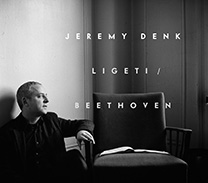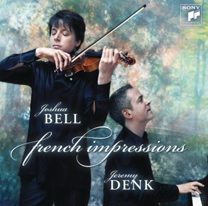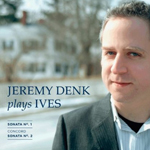I read a wonderful quote the other day: “A mathematician is a device for converting coffee into theorems.” (Don’t ask me to source it, I forget.) And today, from my first sip, blogposts bloomed in my brain, begging to be let free. I want to follow up on some Schumann stuff… Yesterday I compared a passage in Roland Barthes’ Lover’s Discourse to the various “manners” of Schumann, and lying in bed this morning, further examples of the three “stages” (affirmation, doubt, re-beginning) leapt to mind. For you Schumann fans, the Fantasy, Op. 17, last movement, is a perfect example of this “let us begin again,” this return which is not a repetition, the affirmation of difference, and the love affair in question here is between Schumann and Beethoven, an austere, distant, but intense love, visited with all kinds of anxiety and power imbalances, like any good relationship. Haha.
But I would like to get technical today, and for those of you non-musicians, don’t freak out because I am going to make all kinds of oversimplifying analogies to language and physics which will have two virtues: 1) to make it easy to understand what I’m saying and 2) to infuriate any music theorists who might be reading. In fact, I will forward this post on to a couple especially crusty music theorists I know and hopefully there will be all sorts of withering commentary, like my favorite remark scribbled on the margin of the first draft of my Juilliard doctoral document: “Yuck.”
Oversimplifying analogy #1: Music is a language, i.e. it has a grammar and a syntax. For a given phrase, we’ve got a “home key,” which we call (don’t freak out) the TONIC. And the harmony which leads us to the tonic is the DOMINANT…
DOMINANT goes to TONIC
and then of course before the dominant we might have the dominant’s dominant, the pre-dominant…
Dominant of Dominant
goes to
Dominant
goes to
Tonic
(Musicians reading this will be bored. My apologies. This is all, like, basic musical “logic.”) Now the tonic is, in a sense, the “object” of the phrase. Oversimplifying analogy #2 coming up. Let’s take the sentence “Last night I ate risotto.” If I say simply “Last night I ate…” your listener will certainly be wondering; did you eat a roast beef sandwich at Subway, or New Zealand red snapper with caramelized persimmon and coconut-candlenut foam (as I did at Jefferson just the other night, highly recommended)? Analogy: what you ate (object of sentence) = tonic of musical phrase. Take it or leave it. Now, take this phrase of Schumann, the opening outburst of the Intermezzo from Faschingsschwank aus Wien:
In this phrase, we have all the “logical” ingredients above: predominant, dominant, tonic. I have labeled them all up there in the score … take my word for it, or ask a crusty music theorist to confirm it for you. But the way that Schumann writes the phrase, ALL THE EMPHASIS IS ON the subject and verb (predominant/dominant), and THE TONIC IS NOT really a significant part of the gesture. Consider the melody: there is a leap up to an accented note (the predominant) then a beautiful turn-around gesture (the dominant)… on the tonic harmony there is no melody, only absence–the resolution only occurs in the left hand. All the semantic emphasis is in “the wrong place.” Last night I ate (risotto).
Schumann in this phrase is acting like a magician. Through his sleight-of-hand, our attention is “misdirected.” Instead of the harmony to which all the harmonies are headed–instead of the goal–we are made to notice the predicates, the preparatory harmonies. The resolution, the conclusion, is parenthetical, a “non-event.” Schumann slips it in where it won’t be noticed, “under our noses.”
What’s more, radical Robert Schumann persists in these sorts of phrases, perpetually putting the accent on the wrong syllable, and by this inversion creates a kind of reverse syntax. This mirror syntax is on the one hand perfectly logical (since all the harmonies are there, in the right order), and on the other hand unsettling, asymmetrical (as the emphasis is always away from the proper place, as if the rhythm of tonality constantly has to be rewritten, challenged, undone).
Now, Schumann can build whole pieces on these “imbalanced” phrases; he loves them. Let me take this a step further. For me, as a listener and performer, I feel like the main force here is not any one chord, but the tension between the predominant and dominant. (“Music is between the notes.”) They exert a kind of gravitational pull towards each other. When I play them, I feel a kind of tension and release in my gut, or somewhere… Oversimplifying analogy #3 coming. But: the main sun of this solar system is the tonic, it is the ultimate source around which the other harmonies “orbit.” Without that tonic, the other harmonies would have no “meaning.” The tension which Schumann adores is between two moons; he neglects the sun.
How does one build on swirling tension (for that is what this Intermezzo does)? If the brick is a “feeling of tension or pull,” how can those be solid enough to hold up a musical building? This tension is not quicksand; those “preliminary” chords, those pairings (predominant/dominant) feel awfully strong; the piece, though unsettled, has tremendous energy (note the tempo marking, “with the greatest energy.”) Schumann… revolutionary, Romantic… redefining the terms, forcing us into a different frame of reference, finding strength in reversal.




One Comment
And the mathematician in question is–
Paul Erdös, subject of Paul Hoffman’s book “The Man Who Loved Only Numbers.”
Correction: in a previous comment, the author questioned whether Jeremy Denk was a “postmodernist whack job.” The correct spelling is of course “wack” job.